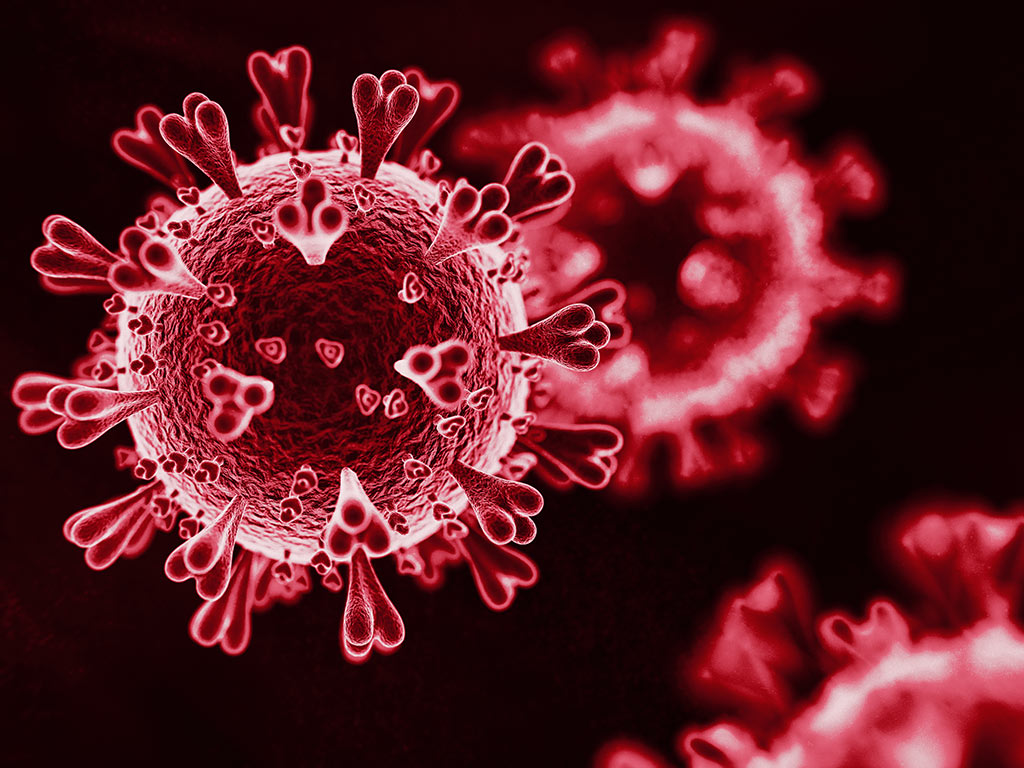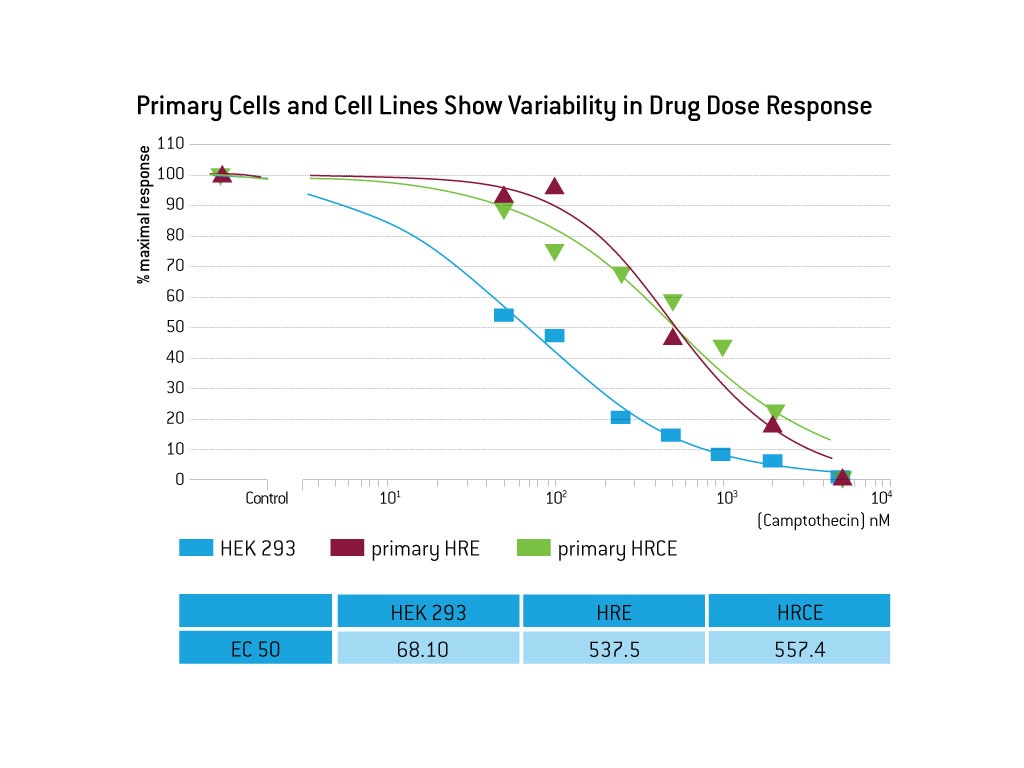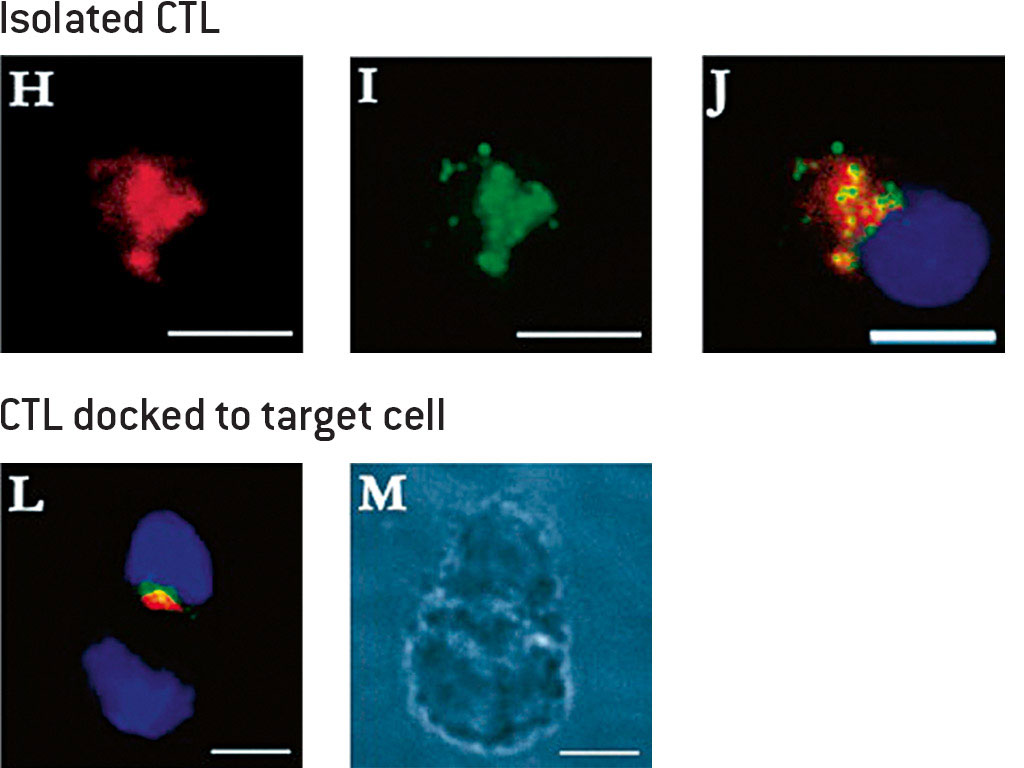Endotoxin and Pyrogen Testing Products
The next chapter in endotoxin testing... Let's write it together.
The next chapter in endotoxin testing... Let's write it together.
Make the right choices in drug discovery...Together we can develop your next biological model.
Primary cell culture provides more biologically relevant data than that generated using cell lines. Concerns over the use of cell lines have resulted in a growing need for primary cells in a variety of applications from basic research to drug discovery. Often, primary cells are combined with newer technologies such as 3D cell culture given a recent surge within the research community to use better reagents to improve research.
But what are primary cells and how do they differ from cell lines? How can you optimize your primary cell culture or create more physiologically relevant models using primary cells in 3D? Find the answers to these questions and a comprehensive introduction into the topic here on our primary cell application page, packed with a broad collection of publications, webinars and other helpful resources.
If you are familiar with primary cell culture and are interested in purchasing Lonza’s cells or media products, here are the quick links to our products:

Learn more about our integrated solutions which can support you from drug discovery to development for SARS-CoV-2. Choose from a broad donor panel of airway and immune cells, culture media for primary cells, media and endotoxin testing products for vaccine and protein production, or use our NucleofectorTM Technology for virus creation.
Learn moreLonza offers a comprehensive collection of cryopreserved and fresh primary cells supporting many research areas. All cells have been ethically sourced and authenticated by thorough QC testing. Our cryopreserved cells reduce the burden of self-isolations and QC which requires substantial expertise, infrastructure and access to the appropriate, ethically sourced donor tissue. Researchers using fresh cells often face obstacles of unsuccessful isolations, comparing data with off-site groups, or comparing data over a long-term study due to the variability among the isolations. Lonza’s cryopreserved cells help overcome above challenges.
Lonza’s primary cell media products have been optimized for each cell type.
For majority of the primary cell types, classical medium is not sufficient to support growth, or to retain the phenotypic markers. Our BulletKitTM Media is formulated with additional growth factors and hormones to optimally support consistent growth of primary cells while maintaining the tissue-specific characteristics. Our archive of publications and supporting white papers show suitability of our Primary Cell BulletKitTM Media for establishing complex co-culture models or developing advanced cell culture models.
Cell culture procedures are conducted with two types of cells:
Primary Cells – Cells isolated directly from human or animal tissue using enzymatic or mechanical methods. Once isolated, they are placed in an artificial environment in plastic or glass containers supported with specialized medium containing essential nutrients and growth factors to support proliferation. Primary cells could be of two types – adherent or suspension. Adherent cells require attachment for growth and are said to be anchorage-dependent cells. The adherent cells are usually derived from tissues of organs. Suspension cells do not require attachment for growth and are said to be anchorage-independent cells. Most suspension cells are isolated from blood system. Some tissue-derived suspension cells are available such as hepatocytes or intestinal cells which are suitable for ADMET applications. Although primary cells usually have a limited lifespan, they offer a huge number of advantages compared to cell lines. When performing primary cell culture, researchers are acquiring an opportunity to study donors and not just cells. Several factors such as age, medical history, race, and sex can be considered when building an experimental model. With a growing trend towards personalized medicine, such donor variability and tissue complexity can only be achieved with use of primary cells and are difficult to replicate with cell lines that are very systematic and uniform in nature and do not capture the true diversity of a living tissue.
Cell Lines – Cells that have been continually passaged over a long period of time and have acquired homogenous genotypic and phenotypic characteristics. Cell lines can be finite or continuous. An immortalized or continuous cell line has acquired the ability to proliferate indefinitely, either through genetic mutations or artificial modifications. A finite cell line has been sub-cultured for 20-80 passages after which they senesce. Cell lines are preferably used for convenience as they are easy to handle and widely published. However, they are less preferred as a biologically relevant option, since they have lost the true characteristics of the original tissue from which they were isolated. Serial passaging is known to cause genotypic and phenotypic variation in cell lines. Variation can often be so far from that of the original tissue to where they do not mimic the in vivo environment very closely. Cells that do not represent the original tissue could result in false negative or false positive findings.
Request info| Primary Cells | Immortalized Cell Lines | |
| Lifespan: | Limited, resembles tissue characteristics | Infinite, loses tissue characteristics |
| Closer to an in vivo model: | Yes, isolated directly from the tissue | No, clonally selected over time |
| Reduces animal testing costs: | Yes, used in advanced cell culture models to refine experiments | Limited ability to develop biologically relevant complex in vitro models |
| Mutations/Modifications: | Low | High |
| Authentication required before use: | No, if bought commercially | Yes, mandated by many government institutes and scientific journals |
| Availability of donor characteristics: | Yes | No |
The debate over using primary cells versus cell lines continues to challenge researchers. It is widely understood that primary cells are a more biologically and physiologically relevant in vitro tool than cell lines for studying human and animal biology. However, for decades, cell lines have been used as a standard tool. Serially passaged, mischaracterized or contaminated cell lines have made their way into publications over the years. For example, a review about cell line quality summarized that 18–36% of cell lines are misidentified or cross-contaminated (Hughes P et al., 2007). Interestingly, a recent study indicates that oncology, by far, has the highest share of literature based on contaminated cell lines (Horbach et al., 2017). In the same article, the authors found that approximately 32,755 articles report on research with misidentified cells which, in turn, are cited by an estimated half a million other papers.
Even if a cell line is of the type that it is claimed to be, selective pressures and genetic drift over time can cause cell lines to exhibit reduced or altered functions. It is often the case that cell lines will mutate during serial passaging, and as a result show genotypic and phenotypic variation from the original donor. For example, Shaw et al demonstrated that the human embryonic kidney cell line HEK 293, derived by adenovirus transformation of primary cultures of HEK cells, bears a greater resemblance to neurons than to kidney cells1. Bioinformatic analysis of proteomic phenotypes revealed that the Hepa1–6 cell lines were deficient in mitochondria, reflecting rearrangement of metabolic pathways when compared to primary hepatocytes (Pan et al., 2009).
Check out further selected references discussing the concerns associated with the use of cell lines:

Primary cells and cell lines show variability in drug dose, so data acquired through cell lines cannot easily be replicated in an in vivo model. The three cell types were dosed with Camptothecin for 48h and their cytotoxic response assessed using the ViaLightTM Assay. The ViaLightTM Assay measures the number of viable cells left after drug challenge, measuring the ATP donated to the assay reaction by viable cells. In this assay the data points are the mean of 40 replicates (8 replicates per plate; 5 plates). We have a marked difference in EC50 dose response almost 10 fold. The HEK 293 cell line required only 68nM Camptothecin to kill 50% of the cells. In the case of the primary cells (HRE = human renal epithelial cells, HRCE = human renal cortical epithelial cells) this dose was over 500nM a strikingly different response.

Some pathways can only be studied in primary cells, as there is no cell line to represent that pathway. Cytolytic T lymphocytes (CTLs) recognize foreign cells and lyse them via the “immunological synapse”. At the immunological synapse CTLs secrete cytolytic granules containing Perforin. hMUNC13-4 is involved in an activation step preceding vesicle membrane fusion in cytolytic granule secretion. NucleofectionTMof a plasmid expressing hMUNC13-4/RFP fusion shows only partial co-localization of hMUNC13-4 (red, H) and Perforin (green, I) in isolated CTLs (overlay J; blue: nuclei stained by DAPI). Upon target cell contact (M) hMUNC13-4 polarizes and extensively co-localizes with Perforincontaining cytolytic granules at the immunological synapse (L). Reprinted from: Feldmann J et al. (2003) Cell 115(4):461-73; with permission of Elsevier.
As research community acknowledges the criticality of improved research, it is equally important to accept and be cognizant of the use of reliable building blocks (i.e reagents, cells) that are the foundation for developing good preclinical models. Concerns over the use of cell lines for research have caused many journals, including those of the Nature Publishing Group, to require cell line authentication for all submitted research. Grant applications have also been impacted with, for example, the National Institutes of Health recently revising its funding guidelines to ensure that only high-quality resources are used to conduct research2.
References:
1 Shaw et al. (2002). FASEB J 16(8):869-71
2 https://grants.nih.gov/grants/guide/notice-files/NOT-OD-15-103.html
The eBook ‘Primary Cells vs Cell Lines’, presented by The Scientist, looks further into the challenges and concerns associated with cell lines and how the use of primary cells can overcome these, download your free copy below.
Browse through our products section for primary cells or cell culture media. Or choose your the cell type of interest from the list below.
Request info| Choose Your Cell Type of Interest | |||
| Chondrocytes | Fibroblasts | Neural Cells | Progenitor Cells |
| Endothelial Cells | Hematopoietic and Immune Cells | Osteoblasts | Skeletal Cells |
| Epithelial Cells | Hepatocytes | Pancreatic Islets | Smooth Muscle Cells |
Whether you need different donors, want to develop a new 3D model, or set up a co-culture, we can help you overcome your primary cell culture challenges. With Lonza’s primary cells and media products, you get access to:
Lonza offers a broad collection of cryopreserved primary rat and mouse neuronal cells. Some cell types, for example neural cells, are hard to obtain. Using our primary neuronal cells acquired from mouse and rat brains avoids the prohibitive burden and restrictions regarding animal availability and dissection. A typical challenge with isolating neural cells is to ensure cells have been acquired from specific regions of the brain. Lonza does extensive quality control tests to ensure the neural cells acquired are tissue-specific for the regions of brains specified.
Benefits of Using Cryopreserved Animal Primary Cells
| Cookie | Duration | Description |
|---|---|---|
| cookielawinfo-checkbox-analytics | 11 months | This cookie is set by GDPR Cookie Consent plugin. The cookie is used to store the user consent for the cookies in the category "Analytics". |
| cookielawinfo-checkbox-functional | 11 months | The cookie is set by GDPR cookie consent to record the user consent for the cookies in the category "Functional". |
| cookielawinfo-checkbox-necessary | 11 months | This cookie is set by GDPR Cookie Consent plugin. The cookies is used to store the user consent for the cookies in the category "Necessary". |
| cookielawinfo-checkbox-others | 11 months | This cookie is set by GDPR Cookie Consent plugin. The cookie is used to store the user consent for the cookies in the category "Other. |
| cookielawinfo-checkbox-performance | 11 months | This cookie is set by GDPR Cookie Consent plugin. The cookie is used to store the user consent for the cookies in the category "Performance". |
| viewed_cookie_policy | 11 months | The cookie is set by the GDPR Cookie Consent plugin and is used to store whether or not user has consented to the use of cookies. It does not store any personal data. |